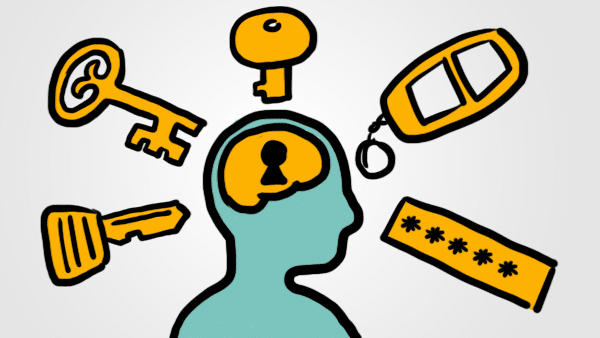5 Strategies to Promote Retention of Information

You Must Remember This
Better retention of information and ideas isn’t just a must for an educated workforce, it ensures higher productivity and fortifies a company’s bottom line. In order to inspire action or change, your message needs to be remembered and retold.
According to a recent study by Instructure, an organization with 1,000 employees wastes at least 10,000 hours per year answering questions about material that’s already been covered in training, and another 5,800 hours per year looking up information that was discussed in training.
One way to improve retention of information is to leverage both visual and audio content. Visual content is more memorable and processed more quickly than text alone. Add audio, and retention rates soar- up to 65% after 72 hours.
Whether you’re in marketing, learning and development, HR, or looking to disseminate key facts and ensure they’re retained, here’s a handful of strategies rooted in neuroscience and creativity to shake up your content and deliver your message so it’s not only heard but remembered long-term.
1. Tell a story
If you turn your message into a story, it’s up to 22 times more memorable.
Some researchers say that storytelling is actually the most powerful way to encourage retention, for a number of reasons- not only does storytelling activate the language processing area of the brain, it also triggers areas of the brain that experience events from the story being told.
A highly engaged brain means a highly engaged audience, and that engagement will contribute to higher retention. Apart from actually hopping in front of an audience to tell a story, video is an ideal medium for storytelling, and visual storytelling by way of graphic facilitation or infographics can also turn your facts and figures into an intriguing narrative.
2. Promote active learning
Countless studies outline the diversity of learning styles—we know that everyone prefers to learn in a different way.
There’s relational learning– draw upon widely known tropes to help bring clarity to your message, perhaps using metaphor or fables to illustrate your ideas.
Experiential learning; rather than standing in front of a passive audience explaining how to do something, model behavior and invite your audience to follow your lead.
Understand your audience and bring content suitable for various types of learners to broaden your scope and your potential for retention of information.
3. Be concise and be direct
This suggestion is inspired by a popular study tip- examine the information you’re looking to share, then edit it to half its length.
Take that remaining information and distill it even further, down to a paragraph.
Then 1-3 sentences, and finally, cut the information down to a single word.
The act of summarizing the information will help you remember the information itself; the single word will help you inspire others to remember it. Expand upon that single word to tell your story in a concise and direct fashion. Less extraneous information means more focus on your ideas and more retention as a result.
4. Encourage drawing
Studies show that drawing ideas strengthens retention far more than merely taking notes.
By merging visual processing with motor skills, memory is vastly improved. It’s adjacent to the ancient theory of creating a “memory palace” – which, as described in this New York Times article, “involves associating the ideas or objects to be memorized with memorable scenes imagined to be at well-known locations, like one’s house or along a familiar walking route.”
By hearing ideas and then associating those ideas with their own ideas via the process of drawing them out, your audience is more innately attuned to the information and more likely to remember it.
5. Use visuals to communicate complex ideas
Relevant visuals are a vital communication tool, and naturally effective at increasing retention.They are a flexible and adaptable tool, as illustrated here.
Use infographics, for example, when you want to create a narrative around facts and figures or convey an avalanche of complicated information in a quick and concise manner. Infographics are the epitome of visual communication and a highly shareable form of content. Because they are so popular, they are a perfect takeaway to amplify your message beyond a training session, lecture, or seminar- and an excellent vehicle for speeding up retention.
